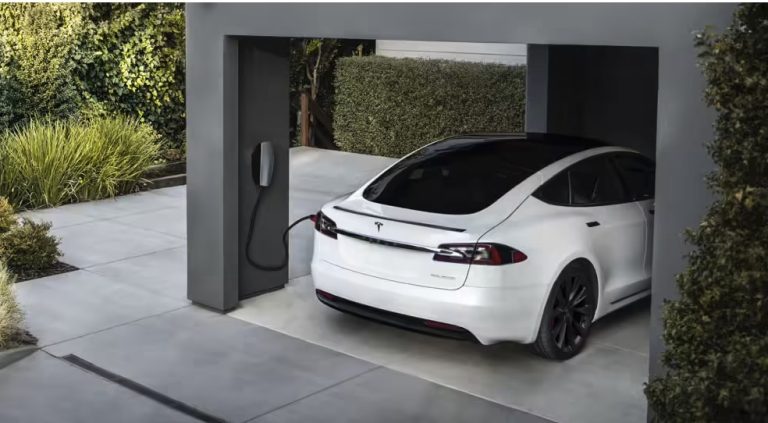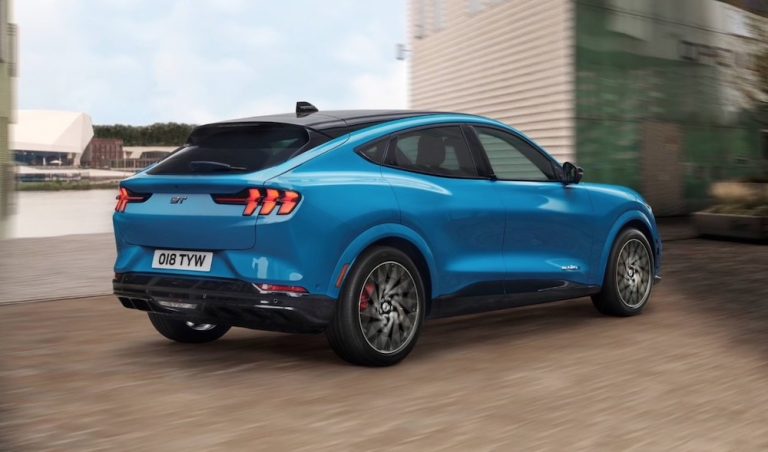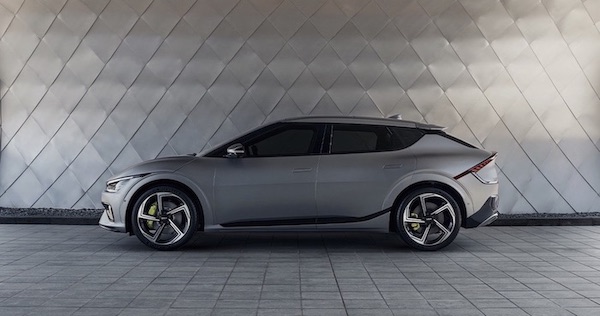Electric Cars: The Basics
For those of you new to zero-emission electric driving, we recommend a read of the following articles:
Sign up to the e-zoomed Electric Living newsletter
The All-Electric BYD SEAL Saloon
BYD Auto Co., Ltd was established in 2003 and is a subsidiary of BYD Company Limited, a publicly listed Chinese conglomerate headquartered in Shenzhen, China. BYD Company Limited is vertically integrated and active across a number of sectors. BYD, an acronym for ‘Build Your Dreams’ manufacturers passenger cars, buses, trucks, forklifts, electric bikes and automotive components. The company also manufactures EV batteries and is the third largest manufacturer of EV batteries in the world. In fact, the company has more than 29 years experience in battery research & development (R&D).
In relation to electric vehicles (EVs), BYD is now the largest EV manufacturer in the world. BYD ended the production of conventional internal combustion engine (ICE) vehicles in 2022, to focus on the development and manufacturer of electric cars. The company currently has the following battery-electric vehicles (BEVs) and plug-in hybrid electric vehicles (PHEVs):
- All-electric BYD Atto 2
- All-electric BYD Atto 3
- All-electric BYD Dolphin
- All-electric BYD Seal
- All-electric BYD Sealion 7
- All-electric BYD Tang
- All-electric BYD Han
- All-electric BYD Seal U
- BYD Seal U DM-i Plug-in Hybrid
BYD continues to push forward with its aspirations for European electric driving market. The introduction of the all-electric SEAL saloon is the third BYD battery-electric vehicle (BEV) for the European market. Despite the significant experience and balance sheet of the Chinese automotive manufacturer, gaining market share from incumbent OEMs is not going to be a walk in the park! And not to mention the stiff competition from other Chinese/ Asian EV manufacturers also vying for a piece of attractive European EV market.
Though pure electric saloon cars are not as popular as pure electric SUVs, the all-electric saloon segment is gaining momentum, in particular, in the mid-priced and premium segments. BYD is keen to position itself as a premium electric car, but clearly, not as premium as the likes of the all-electric BMW i4, all-electric BMW i5, the BMW i7 or the Mercedes EQE. However, the SEAL is BYDs most premium EV to-date.
The BYD SEAL (D-segment) primary competition is from the best-selling Tesla Model 3 and the all-electric Hyundai IONIQ 6. Though the Genesis G80 can also be included in the above list, given the lack of brand awareness and relatively recent entry into the European market, the Chinese Genesis G80 offers limited competition. The million-dollar question is wether the ‘value proposition’ on offer for the BYD SEAL is compelling enough to attract core Tesla 3 or IONIQ 6 buyers. The jury is still out and will be for sometime!
As is the case with the all-electric BYD Atto 3 and the all-electric BYD Dolphin, the BYD SEAL incorporates a Lithium Iron-Phosphate (LFP) Blade EV battery (82.56 kWh). The cobalt-free EV battery uses Lithium Iron-Phosphate (LFP). Most EVs currently available in the market use the more conventional lithium-ion batteries.
The pure electric BYD SEAL is developed on the BYD e-Platform 3.0, an EV dedicated platform also used for the Atto 3 and Dolphin. The company claims that the platform enables an electric range exceeding 1,000 km via the world’s first 8-in-1 electric powertrain. The platform also uses blade batteries, which it claims is ‘one of the world’s safest batteries’. According to the company, the Blade Battery has surpassed the Nail Penetration Test.
BYD claims the SEAL can achieve a zero-tailpipe emission electric range up to 570 km (WLTP) for the rear-wheel drive (RWD) variant. For the all-wheel drive (AWD) SEAL, the company claims up 520 km on a full charge. By way of comparison, the pure electric IONIQ 6 has a claimed range up to 614 km and has a similar sized onboard EV battery (77 kWh). The Model 3 has a range up to 629 km.
As always, the claimed range has to be adjusted for real-world driving conditions. For the entry-level RWD SEAL electric, expect a real-world e-range closer to 480 km. For the AWD an e-range up to 440 km is more realistic. Certainly sufficient for most driving needs! A heat pump is offered as standard on all variants.
It is not clear why BYD continues to persist in limiting the DC charging to 150 kW DC for its electric cars. Given the continued improvement in rapid and ultra-rapid public EV charging infrastructure, it would make a lot more sense to offer a higher DC charging capability. By way of example, the pure electric Genesis G80 EV offers 350 kW DC charging as standard. The SEAL e-saloon can be DC charged up to 80% in 26 minutes at 150 kW DC.
A saving grace for the SEAL is that the EV incorporates a 11 kW (three-phase) AC onboard charger as standard. Certainly helpful for those EV drivers with access to 3-phase AC EV charging at home, the workplace or public charging stations. However, for countries like Ireland, which primarily powers homes with single-phase power supply, the AC charging will be limited to single-phase (7 kW).
The electric saloon is available as both a rear-wheel drive (RWD) and an all-wheel drive (AWD). The AWD can deliver 0-100 km/h in 3.8 seconds (maximum power: 531 PS (390 kW)/ Torque: 670 Nm). The top speed of the EV is 180 km/h. The RWD variant achieves 0-100 km/h in 5.9 seconds. The EV has four driving modes: ECO, Normal, Sport and Snow. The ECO mode prioritises energy efficiency and extends the driving range.
The SEAL e-saloon incorporates the advanced Cell-to-Body (CTB) technology. According to the company, with CTB, the “the battery is integrated within the body floor, creating a sandwich-like structure that incorporates the Blade Battery and the tray.”
This approach increased the structural integrity and safety of the EV and also improves the aerodynamics of the vehicle. The EV has a been awarded a five-star Euro NCAP safety rating. All variants offer as standard a host of safety features, to include: forward collision warning, automatic emergency braking, rear collision warning, rear cross traffic alert, rear cross traffic brake, lane keep assistance, lane change assist and emergency lane keep.
Other driver aids include: blind spot detection system, ESP, traction control, hill decent control, automatic vehicle hold, intelligent speed limit information and intelligent speed limit control. The interior of the cabin is both premium in feel and practical in use. The CTB technology also helps increase cabin space due to reduced battery pack volume. There is ample headroom and legroom for passengers seated in the rear. The EV offers up to 402 L boot space and also has a frunk (53L). Also as standard is a panoramic sunroof.
Unlike the ‘minimalist’ approach to interior space adopted by automotive manufacturers like Tesla, Volvo, Polestar, Honda and others, BYD has a ‘busier’ internal styling. Some like it that way! Also included is a 15.6″ rotatable touchscreen and a 10.25″ drivers information display. The EV incorporates vehicle-to-load (V2L). Using the onboard bidirectional charger, V2L can be used to charge (3kW) certain electric appliances, like a laptop, smartphone etc. It can also be used to charge another EV.
In terms of exterior styling, without an iota of doubt, the EV is attractive and sleek (key to achieving the low Drag Coefficient). The BEV has a 0.21 Cd Drag Coefficient, the same as the all-electric Hyundai IONIQ 6 (0.21 Cd Drag Coefficient). The lower the aerodynamic coefficient, the higher the efficiency of the vehicle.
BYD continues to follow its ‘marine/ ocean-inspired design approach’. BYD has also listened to the feedback from European customers and has dropped the ‘Build Your Dreams’ slogan at the rear of the car. A good move indeed! However, it seems that BYD is still keen to stamp its mark on the rear. So in a rather unique approach the rear of the AWD variant sports a ‘3.8S’ badge, which is for its acceleration 0-100 km/h: 3.8s.
Company-car drivers can also take advantage of the battery-electric vehicles (BEVs). Bottom-line, electric driving is good for the environment and the wallet!
| PROS | CONS |
|---|---|
| Attractive exterior styling | DC charging limited to 150 kW DC |
| Decent electric range. 11 kW AC onboard charger and heat pump as standard | Expensive, given BYD limited brand awareness |
| Available as a rear-wheel drive (RWD) and all-wheel drive (AWD) | Stiff competition from Tesla, Hyundai and others |
The All-Electric BYD SEAL Saloon (credit: BYD)
| At A Glance | |
|---|---|
| EV Type: | Battery-Electric Vehicle (BEV) |
| Body Type: | Saloon |
| Engine: | Electric |
| Available In Ireland: | No |
| Variants (1 Option) |
|---|
| BYD SEAL (from € N/A) |
| EV Battery & Emissions | |
|---|---|
| EV Battery Type: | Lithium Iron-Phosphate (LFP) |
| EV Battery Capacity: | Available in one battery size: 82.56 kWh |
| Charging: | 150 kW DC rapid charging (30%-80%: 26 mins). Onboard charger 11 kW AC (0%-100% : N/A) |
| Charge Port: | Type 2 |
| EV Cable Type: | Type 2 |
| Tailpipe Emissions: | 0g (CO2/km) |
| EV Battery Warranty: | 8 years or 200,000 km |
| Average Cost Of Residential Charging | |
|---|---|
| Battery net capacity: 16.7 kWh | € 4.00 |
| Battery net capacity: 30.0 kWh | € 7.19 |
| Battery net capacity: 39.2 kWh | € 9.39 |
| Battery net capacity: 45.0 kWh | € 10.78 |
| Battery net capacity: 50.0 kWh | € 11.98 |
| Battery net capacity: 64.0 kWh | € 15.34 |
| Battery net capacity: 71.0 kWh | € 17.01 |
| Battery net capacity: 77.0 kWh | € 18.45 |
| Battery net capacity: 90.0 kWh | € 21.57 |
| Battery net capacity: 100.0 kWh | € 23.97 |
- Note 1: The average cost of residential electricity in Ireland varies depending on the region, supplier and type of energy used. An average for Ireland is 23.97 cents/kWh.
- Note 2: Not all EV manufactures make available the data on net EV battery capacity, and in a number of instances the EV battery capacity advertised, does not state if it is gross or net capacity. In general, usable EV battery capacity is between 85% to 95% of the gross available capacity.
| Charging Times (Overview) | |
|---|---|
| Slow charging AC (3 kW – 3.6 kW): | 6 – 12 hours (dependent on size of EV battery & SOC) |
| Fast charging AC (7 kW – 22 kW): | 3 – 8 hours (dependent on size of EV battery & SoC) |
| Rapid charging AC (43 kW): | 0-80%: 20 mins to 60 mins (dependent on size of EV battery & SoC) |
| Rapid charging DC (50 kW+): | 0-80%: 20 mins to 60 mins (dependent on size of EV battery & SoC) |
| Ultra rapid charging DC (150 kW+): | 0-80% : 20 mins to 40 mins (dependent on size of EV battery & SoC) |
| Tesla Supercharger (120 kW – 250 kW): | 0-80%: up to 25 mins (dependent on size of EV battery & SoC) |
- Note 1: SoC: state of charge
| Dimensions | |
|---|---|
| Height (mm): | 1460 |
| Width (mm): | 1875 |
| Length (mm): | 4800 |
| Wheelbase (mm): | 2920 |
| Turning Circle (m): | 11.4 |
| Boot Space (L): | 402 |
| BYD SEAL RWD | |
|---|---|
| EV Battery Capacity: | 82.56 kWh |
| Pure Electric Range (WLTP): | 570 km |
| Electric Energy Consumption (kWh/100km): | 14.5 |
| Charging: | 150 kW DC rapid charging (30%-80%: 26 mins). Onboard charger 11 kW AC (0%-100% : N/A) |
| Top Speed: | 180 km/h |
| 0-100 km/h: | 5.9 seconds |
| Drive: | Rear-wheel drive (RWD) |
| Max Power (PS): | 308 (230 kW) |
| Torque (Nm): | 360 |
| Transmission: | Automatic |
| Seats: | 5 |
| Doors: | 4 |
| Kerb Weight (kg): | 2,185 |
| Colours: | 6 |
| NCAP Safety Rating: | Five-Star |
| BYD SEAL AWD | |
|---|---|
| EV Battery Capacity: | 82.56 kWh |
| Pure Electric Range (WLTP): | 520 km |
| Electric Energy Consumption (kWh/100km): | 15.9 |
| Charging: | 150 kW DC rapid charging (30%-80%: 26 mins). Onboard charger 11 kW AC (0%-100% : N/A) |
| Top Speed: | 180 km/h |
| 0-100 km/h: | 3.8 seconds |
| Drive: | All-wheel drive (AWD) |
| Max Power (PS): | 531 (390 kW) |
| Torque (Nm): | 670 |
| Transmission: | Automatic |
| Seats: | 5 |
| Doors: | 4 |
| Kerb Weight (kg): | 2,185 |
| Colours: | 6 |
| NCAP Safety Rating: | Five-Star |
Used Electric Cars: Top Tips
The growth in electric driving in Ireland has been unabated, but not surprising. Like other international markets, consumers in Ireland (individuals, families and businesses) are seeking environmentally-friendly and cleaner forms of road transportation. Electric driving fits perfectly in the narrative they seek!
We have also witnessed growth in the used electric car market. Five years ago it was challenging to find a reasonable choice of used electric vehicles (EVs), with only a handful of used models available. In 2023, the narrative could not be more different.
Today the choice for consumers seeking second-hand electric cars is vast, to include, leading global automotive brands, body types, budgets etc. Of course, the used EV market will only continue to grow, as consumers continue to become more confident with purchasing new and used electric cars. But of course, as is the case in buying any used product, it is always helpful to have a few helpful tips to avoid costly mistakes!
| Top Tips For Buying A Second-Hand Electric Car |
|---|
| Check the EV real-world range: electric car range is impacted by a number of factors, to include: weather, temperature, road conditions, payload, driving profile and more!. Always take the EV for a test drive, preferably, testing the EV range under as many real-world conditions as possible. |
| Check EV battery performance/ charging/ degradation: in general, an EV battery will degrade 2.3% of maximum capacity a year. |
| Check EV battery warranty: in general, most BEVs have an EV battery warranty of 8 years or 100,000 miles. However, PHEVs have a shorter battery warranty profile. Moreover, some of the earlier generation of electric cars offered shorter battery warranty, usually up to 5 years. Also worth checking if the EV battery can be extended, albeit, with an additional payment. |
| Check service/ maintenance history and costs: this applies to all types of cars, to include petrol, diesel and electric cars. If a car does not have a well documented service history, best to avoid it. |
| Buy a used EV with as large a battery as possible, for the given budget: the larger the onboard EV battery, potentially, the longer the electric range. In particular, for those considering buying a used plug-in hybrid car. Only buy a PHEV with a real-world practical range, so that, the benefits of electric driving can be leveraged. |
| Where possible, look for EVs with DC charging capability: in general, most PHEVs do not offer DC charging, while most of the latest BEVs do. It can be the case, that some of the first-generation of electric cars do not offer DC charging capability. So for those keen on buying a used pure electric car, better to identify one with DC charging capability, and preferably 50 kW DC +. |
While e-zoomed uses reasonable efforts to provide accurate and up-to-date information, some of the information provided is gathered from third parties and has not been independently verified by e-zoomed. While the information from the third party sources is believed to be reliable, no warranty, express or implied, is made by e-zoomed regarding the accuracy, adequacy, completeness, legality, reliability or usefulness of any information. This disclaimer applies to both isolated and aggregate uses of this information.



























